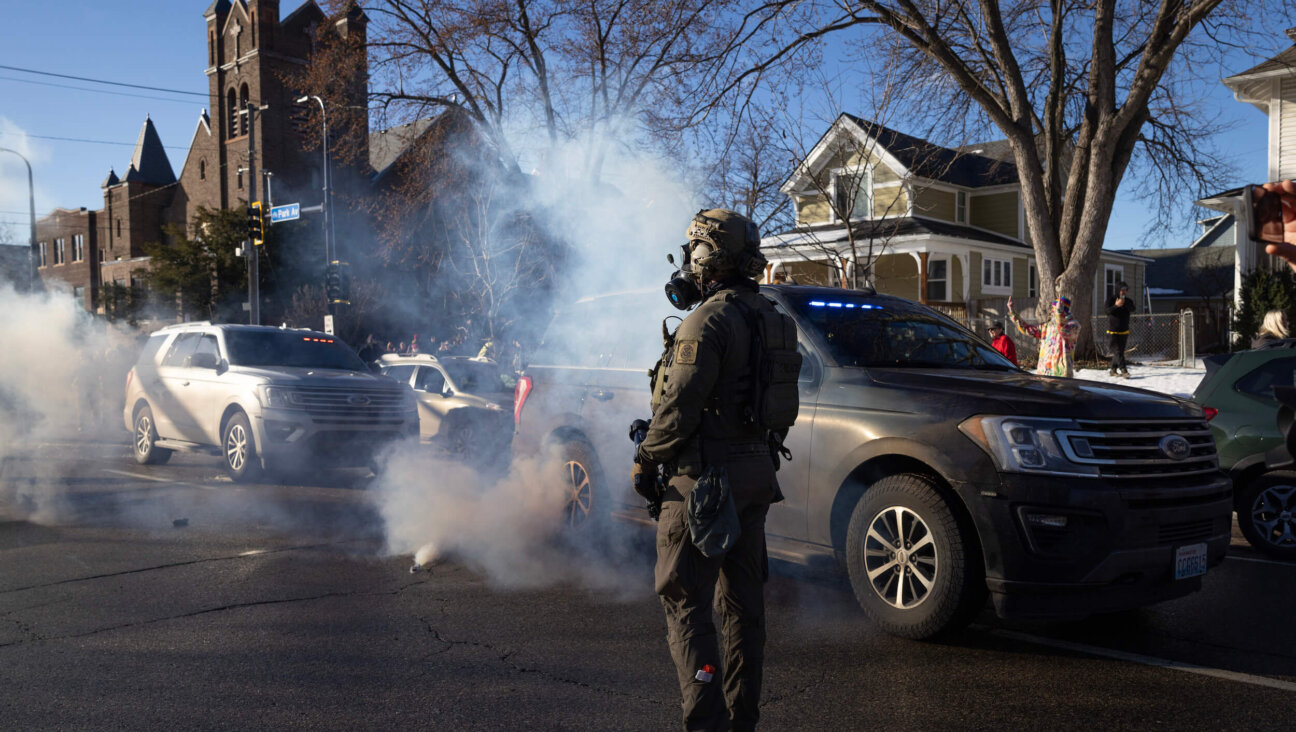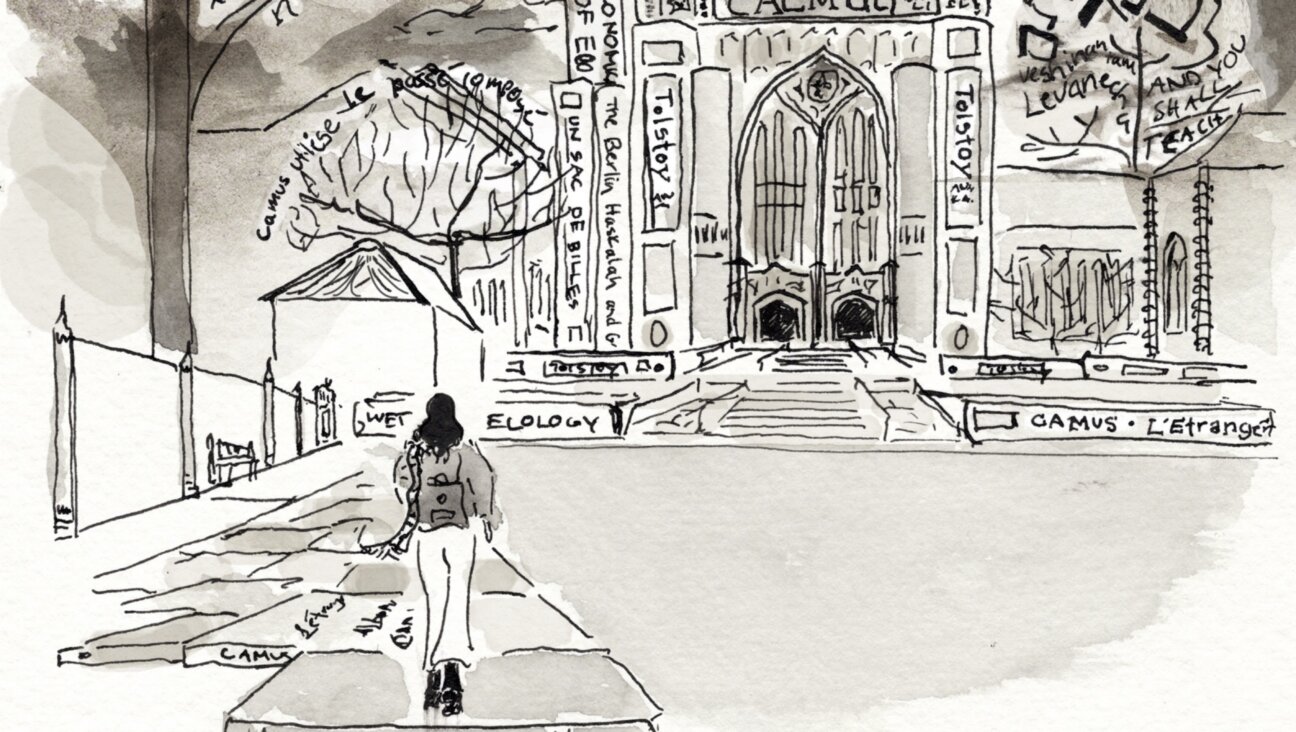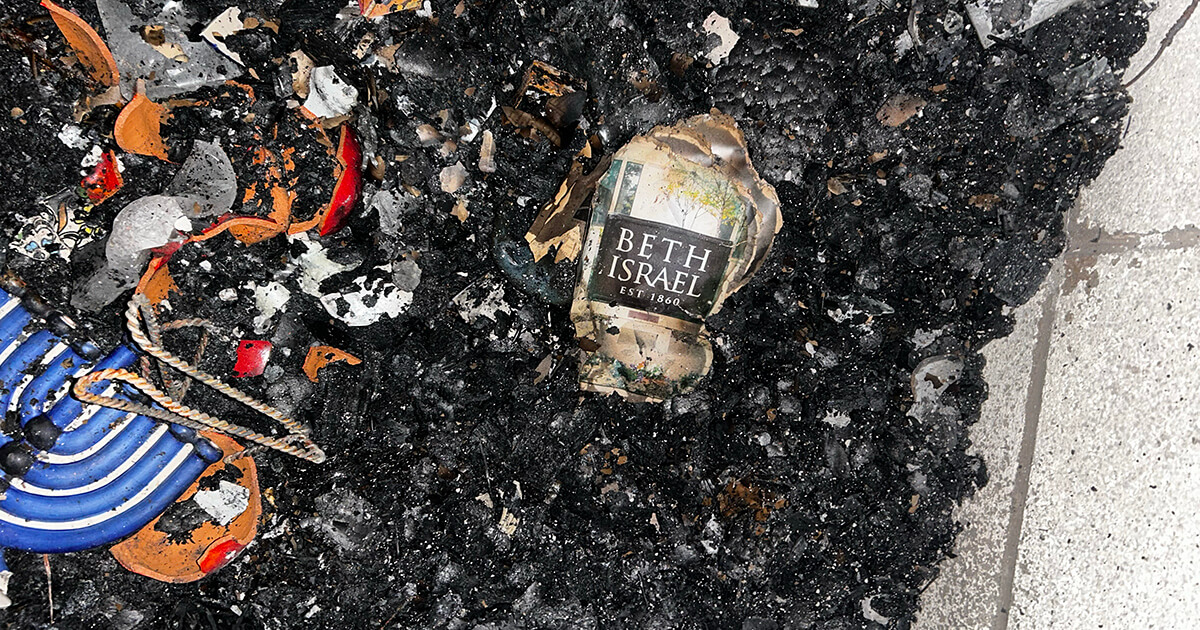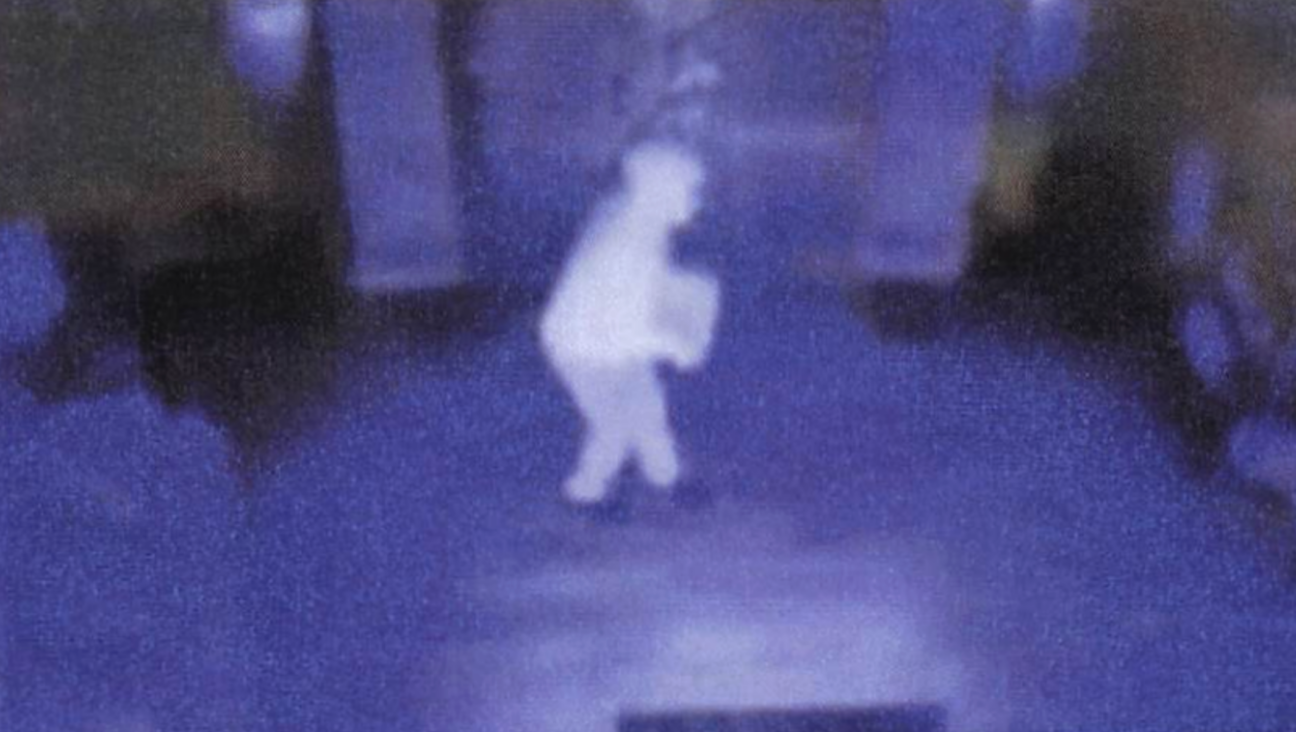What if Sinwar had come out with his hands up?
Had he surrendered, Hamas’ Scarface would have posed greater problems for Israel and the West.
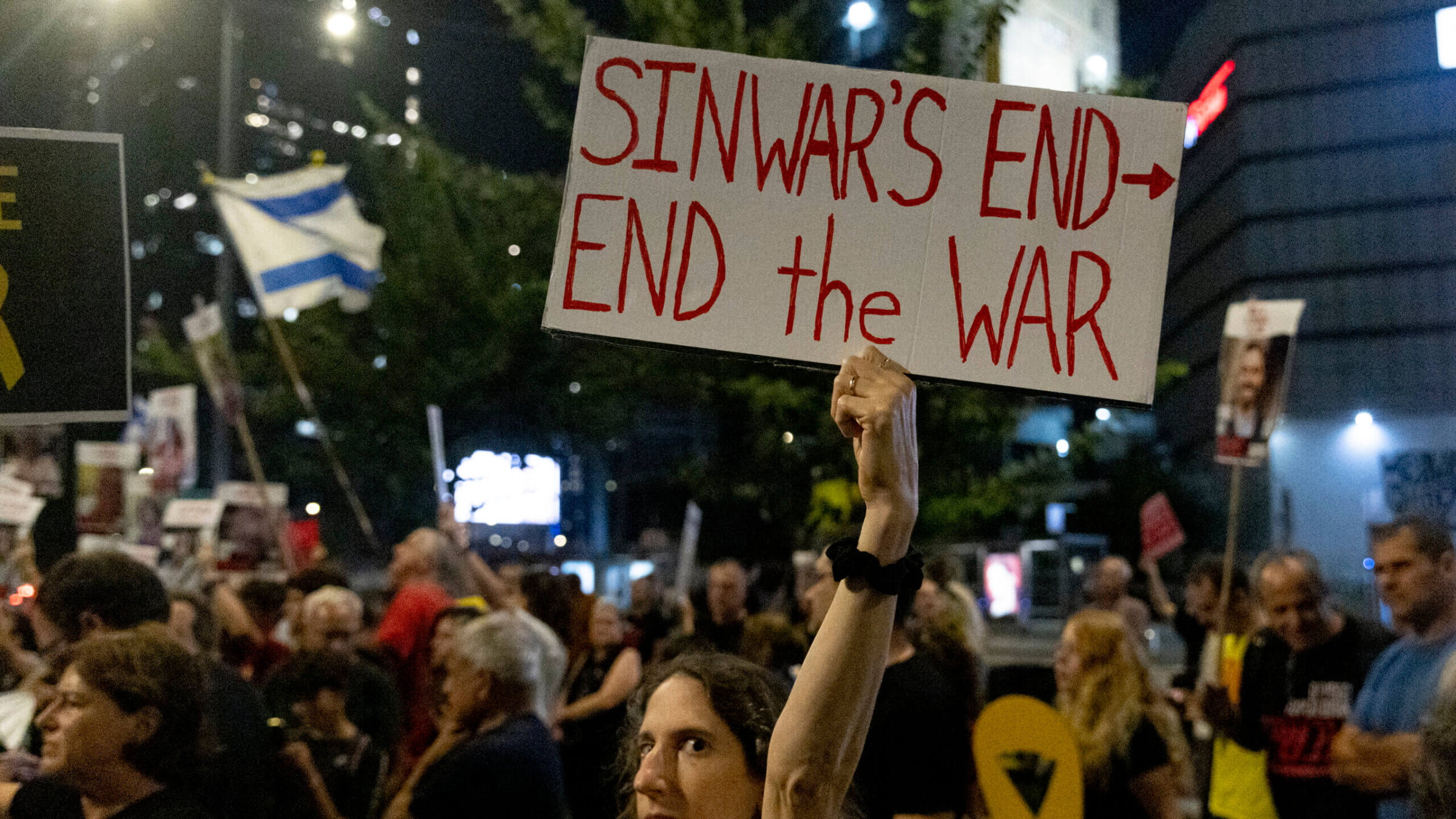
A protester holds a sign during a demonstration calling for an hostages deal in reaction to news of Yahya Sinwar’s death on October 17, 2024 in Tel Aviv, Israel. Photo by Amir Levy/Getty Images
Rewatching the world’s last encounter with elusive Hamas leader Yahya Sinwar—thanks to footage widely shared by the Israel Defense Forces—I was struck by how the final scene played out, and how it could have gone otherwise. Thank God it didn’t.
An Israel Defense Forces drone swoops around the shot-up husk of a residential building in Gaza’s clobbered Rafah district, then enters a second-story apartment full of dust and debris. The camera hones in on a spectral figure toward the rear—so dim that news outlets inserted a red line around the man sunk in a plush chair, his face masked by a cloth, wearing sunglasses or goggles. He is the invisible terrorist.
The drone approaches and hovers. The ghostly fugitive, whose right arm appears bloodied, lifts a stick of wood with his other and waves it at the UAV before the camera pans left. Reports indicate he was immediately taken out by a sniper’s bullet before the building collapsed from tank fire outside.
That the man found the next day in the rubble turned out to be Israel’s most-wanted terrorist was an amazing score. President Joe Biden, who had pressed Israel not to enter Rafah in the first place last May, called his death a “good day for the world,” with Vice President Kamala Harris declaring “justice has been served.” The Wall Street Journal noted how fitting it was that Sinwar was cornered and eliminated in retribution for his murderous agenda—he “dies as he lived.”
Of course, Hamas drew its own warped narrative from those final images, seeing the enfeebled and isolated Sinwar as Al Pacino in Scarface, going out in a defiant blaze. He was “advancing and not retreating, brandishing his weapon,” Hamas announced, “engaging and confronting the occupation army at the forefront of the ranks.”
One awaits the T-shirts and Iran-issued sticks to come—“Take that, Zionists!”
The Associated Press reported that online users widely shared the image of an oil painting depicting Sinwar sitting defiantly on his armchair, inspired by the IDF drone footage.
But what would have happened had Sinwar raised his arms and surrendered? The young IDF soldiers who’d been chasing him were reportedly on a cleanup training patrol and had no clue they’d stumbled onto the mastermind of the Oct. 7 attacks. The man shown in the video doesn’t exactly look primed for a fight and seems to be signaling, “Finish me now.”
Although he may have vowed never to be taken alive and wanted the symbolism of dying violently in battle, Sinwar’s pain and exhaustion might have accepted capture—and welcomed the hard calculus it would bring for his enemy.
On the plus side, a living Sinwar may have yielded important operational intelligence on Hamas, including Iran’s role in planning and funding Oct. 7. He may even have spilled incriminating details on his patrons in Tehran, believing the mullahs abandoned him after his triumphant assault last October.
Just the very act of surrendering to the IDF would have sent a message of defeat to Hamas and its supporters, hastening a hostage release and an end to the war.
Those are the benefits. But there would have been significant costs as well. Had Israel merely apprehended Sinwar, it would have faced pressure to release its captive to the International Criminal Court, which had an arrest warrant in his name for war crimes. There would also have been demands from human rights groups dictating how Mossad and Shin Bet should handle their high-profile catch. The United Nations would have added its hypocritical voice, with member states and perhaps the secretary-general issuing ultimatums for a negotiated release.
More challenging would have been the logistics and optics of Sinwar’s incarceration, from his legal representation and physical treatment to protocols for conducting interrogations—Sinwar knew how to game the system after serving more than two decades in Israeli prisons. Ultimately, a public trial would have allowed him a platform to spout the righteousness of his cause and claim victory for bringing worldwide opprobrium against Israel as an occupying force.
Potent as he may yet become as a slain martyr, Sinwar could have generated greater power behind bars, fueling Palestinian liberation propaganda and protests, and inciting rage among Islamists, including those in the West eager to rally for a caged jihadist of such stature.
Having suffered the tragic boomerang consequences of releasing Sinwar as part of a lopsided 1,000-plus prisoner exchange in 2011, Israel would never have made such a deal again.
Yet a captive Sinwar might have extracted other concessions regarding the fate of the remaining hostages, or helped plot fresh revenge killings, suicide attacks and uprisings. If he could dispatch orders without electronic devices while on the run from the maze of Gaza’s tunnels, he might have pulled strings from an Israeli cell, not unlike narco chiefs who’ve run homicidal crews from maximum-security prisons.
On balance, Israel is safer and stronger for having neutralized its man—and that’s nothing to shake a stick at. Hamas’ Scarface got the ending he—and we—deserved.

